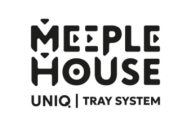Frequently Asked Questions concerning Common Reporting Standard

The Organization for Economic Co-operation and Development maintains and consistently updates the list of frequently asked questions (FAQs) on the application of the Common Reporting Standard (CRS). These FAQs were obtained from representatives of business industry and government delegates. The answers to such questions provide further adjustments regarding the CRS and assist in ensuring coherence in realization. More information on the Common Reporting Standard is available on the Automatic Exchange Portal.
SECTION I: MAIN REPORTING DEMANDS
1. Reporting balance or value
What balance or value of Equity Interest should be reported where the value is not otherwise frequently determined by the Financial Institution (for example it is not routinely recalculated to report to the customer)?
The Common Reporting Standard determines the account balance or value in the case of Equity interest as the value calculated by the Financial Institution for the purpose that requires the most frequent determination of value. Specification of the value will depend on certain facts. Depending on particular circumstances, it could be the value of interest upon acquisition, if the Financial Institution has not otherwise recalculated the balance or value for other concerns.
2. Aggregation and excluded accounts
Excluded Accounts are not required to be included when applying the aggregation regulations. The aggregation regulations relate to the aggregation of Financial Accounts. The definition of Financial Accounts specifically excepts Excluded Accounts.
3. Information regarding Account Holder
How does Reporting Financial Institution inform concerning individual that does not have both first and last name?
The CRS arrangement demands filling of the data elements for first name and last name. If the individual’s legal name is a mononym or single name, the data element regarding first name should be filled in as “NFN” (No First Name) and the blank space for last name should be filled out with the account holder’s mononym.
4. Reporting on revenues from sales credited or paid in regard to the Custodial Account
In case of Custodial Account, the total gross revenue from sale or redemption of Financial Assets paid or credited to the account are to be reported.
Is reporting of these gross proceeds also required when they are paid or credited with regard to the Custodial Account?
Yes, as is the case for the income items, reporting of gross revenue from sale or redemption of Financial Assets held in the Custodial Account is required once these gross proceeds are paid or credited to the account and in case they are paid or credited in regards to such account.
In case Financial Assets are held in the Custodial Account, any returns and gross receipts from sale or redemption of such Financial Assets are reportable by the Custodial Institution providing services to such Custodial Account, notwithstanding the account to which such amounts are paid or credited.
5. Requirement to collect Tax Identification Numbers
TIN is not necessary to be reported in regards to Reportable Account held by Reportable Person concerning whom TIN has not been assigned. So Financial Institution should not impose requirement on Reportable Person to obtain and submit TIN.
6. Periodical distributions to discretionary beneficial owners of trust that is Reporting Financial Institution
In case the trust is the Financial Institution, Equity Interest is considered to be held by any person treated as settlor or beneficial owner of all or a portion of the trust. For these concerns, beneficial owner who may receive discretionary distribution from the trust only will be treated as beneficial owner of the trust if such person receives distribution in the calendar year or other appropriate reporting period.
In case discretionary beneficial owner of the trust is the Financial Institution, the absence of distribution from the trust in a given year, but not in a following year, does not constitute account closure, as long as the beneficial owner is not permanently excluded from receiving further distributions from the trust.
7. Reporting Controlling Persons of settlors that are Entities
The Common Reporting Standard stipulates that where the settlor of the trust is the Entity, Reporting Financial Institutions should also identify the Controlling Person(s) of the settlor and report them as Controlling Person(s).
Identification and reporting of Controlling Persons of the settlor is required not only in the year of settlement but also in all subsequent years.
8. Reporting requirements in year of closure of the trust account
The financial activity to be reported in case of closure of the account maintained by the trust that is the Reporting Financial Institution and maintained by the Reporting Financial Institution for the trust that is the Passive NFE includes both the fact of closure of the account and the gross payments made to the Account Holder during the relevant reporting period.
9. Collection of TINs from Controlling Person that is not Reportable Jurisdiction Person
Investment Entity that is not Participating Jurisdiction Financial Institution is Passive NFE, and due diligence procedures should be applied to the account of the Investment Entity to determine whether its account is Reportable Account. The account is the Reportable Account if the Passive NFE has one or more Controlling Persons who are Reportable Persons. Subject to provisions in domestic law, in particular with respect to the so-called “wider approach”, if Controlling Person is not Reportable Jurisdiction Person, the TIN is not required to be collected from such Controlling Person.
10. Specification of usufruct (a legal right to use and derive profit from property) for the purposes of the Common Reporting Standard
Both bare owner (“nu-propriétaire”) and usufructuary (“usufruitier”) may be considered as joint Account Holders or as Controlling Persons of the trust for due diligence and reporting purposes.
SECTIONS II-VII: DUE DILIGENCE REQUIREMENTS
1. Documentary Evidence
The Common Reporting Standard does not require Reporting Financial Institution to preserve a paper copy of the Documentary Evidence collected as part of its due diligence procedures.
Meanwhile, Reporting Financial Institution may retain the paper copy, namely: original, certified copy, or photocopy of the Documentary Evidence or notation of the type of documentation considered, the date of reviewing the documents, and the document’s identification number (where applicable).
2. Residence address test
The Common Reporting Standard does not require a paper search to examine the Documentary Evidence. Generally, a requirement of the residence address test is that the residence address is based on Documentary Evidence. If Financial Institution has kept a notation of the Documentary Evidence, or has effeive policies and procedures to confirm that current residence address is the same as the address on the Documentary Evidence provided, then the Reporting Financial Institution will have satisfied the Documentary Evidence requirement of the residence address test.
3. Residence address test – two residence addresses
It is possible that after the application of the residence address test it is determined that the Account Holder has two residence addresses. In case all the requirements for applying the residence address test are met, then it would be possible for the residence address test to result in two addresses being found. Therefore, self-certification could be sought or the account could be reported to all Reportable Jurisdictions where there is a residence address.
4. Reliance on AML/KYC procedures for identifying Controlling Persons
With respect to Pre-existing Entity Accounts with consolidated account balance or value that does not excess USD 1,000,000, the Common Reporting Standard states that (after applying the aggregation rules) the Financial Institution may rely on information collected and maintained for regulatory or customer relationship purposes, including AML/KYC procedures to determine whether Controlling Person is Reportable Person. Moreover, in the example provided, the Financial Institution does not have and is not required to have any such information on file that indicates the Controlling Person may be the Reportable Person, it cannot document the residence of the Controlling Persons and does not need to report that person as the Controlling Person.
5. Identification of Controlling Persons of Passive NFEs with Financial Institutions in the chain of legal ownership
For purposes of determining the Controlling Persons of the Passive NFE, the Common Reporting Standard disallow Reporting Financial Institution to not determine/report such Controlling Person on the basis that there is the Reporting Financial Institution in the ownership chain between the Passive NFE and the Controlling Person. The CRS status of intermediate Entities in the ownership chain is irrelevant for these concerns.
6. AML/KYC Procedures and due diligence for the purposes of Common Reporting Standard
The term “AML/KYC Procedures” means the customer due diligence procedures of Reporting Financial Institution pursuant to the anti-money laundering or similar requirements to which such Reporting Financial Institution is subject. Consequently, for carrying out the due diligence procedures, the applicable AML/KYC Procedures are those to which Financial Institution is subject at specific period of time, as long as, for New Accounts, such procedures are consistent with the 2012 FATF Recommendations.
Where there is an amendment to the applicable AML/KYC Procedures (e.g. upon a jurisdiction implementing new FATF Recommendations), Financial Institutions may be required to collect and maintain additional information for AML/KYC purposes in that jurisdiction. For the purposes of the due diligence procedures, the additional information obtained under such amended AML/KYC Procedures must be used to determine whether there has been a change of circumstances in relation to identity and/or reportable status of Account Holders and/or Controlling Persons.
If additional information obtained is inconsistent with the claims made by a person in self-certification, there has been a change in circumstances, and Financial Institution will have a reason to know that self-certification is unreliable or incorrect.
7. Obligations of Financial Institution to establish tax residency
Financial Institution is not required to provide customers with tax advice or to perform a legal analysis to determine the reasonableness of self-certification. Instead, as provided in the Standard, for New Accounts the Financial Institution may rely on self-certification made by the customer unless it knows or has reason to know that the self-certification is incorrect or unreliable, (the “reasonableness” test), which will be based on the information obtained in connection with the opening of the account, including any documentation obtained pursuant to AML/KYC procedures.
The Standard also states that Participating Jurisdictions are expected to help taxpayers determine, and provide them with information with respect to, their residence(s) for tax purposes. The OECD is facilitating this process through a centralised dissemination of the information (on the Automatic Exchange Portal). Financial Institutions could also direct customers towards this information.
8. Validation of TINs
The CRS provides that Reporting Financial Institution may rely on self-certification unless it knows or has reason to know that the self-certification is incorrect or unreliable. This includes the TIN in relation to Reportable Jurisdiction. The CRS includes expectation that Participating Jurisdictions will provide Reporting Financial Institutions with information with respect to the issuance, collection and, to the extent possible, the practical structure and other specifications of TINs. The OECD will be facilitating this process through a centralised dissemination of the information (on the Automatic Exchange Portal).
Reporting Financial Institution will have reason to know that self-certification is unreliable or incorrect if the self-certification does not contain TIN and the information included on the Automatic Exchange Portal indicates that Reportable Jurisdiction issues TINs to all tax residents. The CRS does not require Reporting Financial Institution to confirm the format and other specifications of TIN with the information provided on the Automatic Exchange Portal. However Reporting Financial Institutions may nevertheless wish to do so in order to enhance the quality of the information collected and minimise the administrative burden associated with any follow up concerning reporting of incorrect TIN. In this case, they may also use regional and national websites providing TIN check module for the purpose of further verifying the accuracy of the TIN provided in the self-certification.
9. Self-Certification – meaning of “positively affirmed”
Self-certification is otherwise positively affirmed if the person making the self-certification provides the Financial Institution with unambiguous acknowledgement that they agree with the representations made through the self-certification. In all cases, the positive affirmation is expected to be captured by the Financial Institution in a manner such that it can credibly demonstrate that the self-certification was positively affirmed (e.g., voice recording, digital footprint, etc.). The approach taken by the Financial Institution in obtaining the self-certification is expected to be in a manner consistent with the procedures followed by the Financial Institution for the opening of the account. The Financial Institution will need to maintain a record of this process for audit purposes, in addition to the self-certification itself.
10. Verbal self-certification
Self-certification may be provided in any manner and in any form. Therefore, provided the self-certification contains all the required information and the self-certification is signed or positively affirmed by the customer, Financial Institution may gather verbally the information required to populate or otherwise obtain the self-certification. The approach taken by the Financial Institution in obtaining the self-certification is expected to be in a manner consistent with the procedures followed by the Financial Institution for the opening of the account. The Financial institution will need to maintain a record of this process for audit purposes, in addition to the self-certification itself.
11. Self-certification with yes/no response
The CRS allows for self-certification to solicit yes/no response to questions about tax residence.
Self-certification can be completed based on yes/no response to record the customer’s jurisdiction(s) of tax residence, instead of requiring the completion of a blank field. The CRS does not prescribe how information on jurisdiction(s) of tax residence must be collected but provides that the information with respect to tax residence cannot be prepopulated. For example, in order to complete self-certification the customer could be asked whether the jurisdiction in which the account is being opened is the sole tax residence of the account holder, with additional questions only being asked if the answer is no.
12. Self-certification provided on the basis of a PoA
If Account Holder has provided that another person has legal authority to represent the Account Holder and make decisions on their behalf, such as through power of attorney, then that other person may also provide self-certification.
13. Reason to Know
Should a self-certification contain language requiring the Account Holder to update the Reporting Financial Institution if there is a change in the information that affects the Account Holder’s status?
Although this is not a requirement under the Standard, Reporting Financial Institution may want (or may be required to under a particular jurisdiction’s domestic law) to include such language in self-certifications collected from its Account Holders as it may reduce the onus on the Reporting Financial Institution in applying the reasonableness test. Pursuant to the reasonableness test, Reporting Financial Institution may not rely on self-certification if it knows or has reason to know that the information contained on the self-certification is unreliable or incorrect.
Jurisdictions may also consider including in their domestic law implementing the CRS a requirement on Account Holders to provide a self-certification to the Reporting Financial Institution and to inform the Reporting Financial Institution if there is a change to information contained in the self-certification that affects their status under CRS.
14. New Accounts of Pre-existing Account Holders
The Commentary provides that a jurisdiction may allow Reporting Financial Institutions to treat a New Account opened by an Account Holder that holds an account with the Reporting Financial Institution (or a Related Entity within the same jurisdiction as the Reporting Financial Institution) as a Pre-existing Account provided that certain conditions are met. Such conditions include that the opening of the Financial Account does not require the provision of new, additional or amended customer information by the Account Holder other than for purposes of the CRS. This condition should be interpreted to include any instances in which the Account Holder is required to provide the Reporting Financial Institution with new, additional or amended customer information (as a result of a legal, regulatory, contractual, operational or any other requirement) in order to open the account. The rationale for this condition is that such instances provide an opportunity to obtain a self-certification together with new, additional or amended customer information as part of the opening of the account.
15. The relationship manager test
The standard of knowledge test applicable to a Relationship Manager could be operationalised through regular (e.g. yearly) instructions and training by a Financial Institution to all of its employees that could be considered Relationship Managers according to the Standard. This could include the Financial Institution maintaining a record of a response made by each Relationship Manager stating that they aware of their obligations and the channels to communicate any reason to know that an Account Holder for which they manage the relationship is a Reportable Person. These communications could then be centrally processed by the Financial Institution in the manner required by the Standard.
16. Reliance on Service Providers
Jurisdiction may allow Reporting Financial Institutions to use service providers to fulfil their reporting and/or due diligence obligations. The Standard does not require, for instance, that the service provider be within the same jurisdiction as the Reporting Financial Institution or obtain approval from the relevant jurisdiction to act as a service provider. The Commentary does provide that the Reporting Financial Institution must satisfy the requirements contained in domestic law and will remain responsible for its reporting and due diligence obligations (i.e., the actions of the service provider are imputed to the Reporting Financial Institution). To facilitate effective implementation, the jurisdiction must have access to the relevant records and evidence relied upon by the Reporting Financial Institution and service provider for the performance of the reporting and/or due diligence procedures set out in the CRS.
17. Determination of CRS Status of Entities
The Commentary provides that an Entity’s status as a Financial Institution or nonfinancial entity (NFE) should be resolved under the laws of the Participating Jurisdiction in which the Entity is resident. If an Entity is resident in a jurisdiction that has not implemented the CRS, the rules of the jurisdiction in which the account is maintained determine the Entity’s status as a Financial Institution or NFE since there are no other rules available.
When determining an Entity’s status as an active or passive NFE, the rules of the jurisdiction in which the account is maintained determine the Entity’s status. However, a jurisdiction in which the account is maintained may permit (e.g. in its domestic implementation guidance) an Entity to determine its status as an active or passive NFE under the rules of the jurisdiction in which the Entity is resident provided that the jurisdiction in which the Entity is resident has implemented the CRS.
18. Residence Address Test – Penalty of perjury
The Commentary defines in what situations the Residence Address Test can be applied. Certain provision refers to a declaration signed under penalty of perjury. "Penalty of perjury" in this context is meant to include all situations where a jurisdiction has included a penalty of a criminal nature for providing a false declaration in its law.
19. Requirement to obtain a TIN in the framework of the curing procedure
In the context of the due diligence procedures for Preexisting Accounts, the Financial Institution is required to use reasonable efforts to obtain a TIN. In case the self-certification is received in the course of the curing procedure, this implies as a minimum that the Financial Institution requests the Account Holder to provide a self-certification which includes a TIN, if applicable. The Financial Institution can rely on such a self-certification, even if it does not contain a TIN of the Account Holder, provided it continues to use reasonable efforts to obtain the TIN.
20. New Entity Accounts – Reliance on publicly available information
Financial Institution needs to obtain a self-certification for the purposes of determining the tax residence of a New Entity Account Holder. If the self-certification indicates that the New Entity Account Holder is resident in a Reportable Jurisdiction, the account is to be considered a Reportable Account, unless the Financial Institution reasonably determines, based on information in its possession or that is publicly available, that the New Entity Account Holder is not a Reportable Person with respect to such Reportable Jurisdiction.
The steps of obtaining a self-certification and confirming the status as a Reportable Person may be taken in either order. Consequently, a Financial Institution may first determine whether a New Entity Account Holder is a Reportable Person. In case it is found that the New Entity Account Holder is not a Reportable Person, the Financial Institution would not be required to obtain a self-certification from such New Entity Account Holder.
21. Determination of the threshold for due diligence with respect to Controlling Persons
For the purposes of determining whether a Controlling Person of a Passive NFE is a Reportable Person with respect to a Preexisting Entity Account, a Reporting Financial Institution may only rely on the information collected and maintained pursuant to AML/KYC Procedures in case the aggregate account balance of such account held by one or more NFEs does not exceed USD 1 million. At what point in time is the USD 1 million threshold for the purpose of determining the due diligence procedure applicable to Controlling Persons of Passive NFEs to be determined?
In line with the general rules applicable to thresholds applied in the framework of the due diligence procedures, the point in time at which the surpassing of the threshold should be verified is the last day of the calendar year or other appropriate reporting period.
Example:
In case the account balance of the relevant account is USD 900 000 on the date on which the Financial Institution carried out the due diligence, but USD 1 100 000 at year-end, the threshold of USD 1 million has been surpassed for the purpose of the due diligence obligations in that year.
22. Timing of self-certifications
With respect to New Individual and Entity Accounts the Standard provides that the Reporting Financial Institution must obtain a self-certification upon account opening.
The Standard provides that a Reporting Financial Institution must obtain a self-certification upon account opening. Where a self-certification is obtained at account opening but validation of the self-certification cannot be completed because it is a ‘day two’ process undertaken by a back-office function, the self-certification should be validated within a period of 90 days. There are a limited number of instances, where due to the specificities of a business sector it is not possible to obtain a self-certification on ‘day one’ of the account opening process, for example where an insurance contract has been assigned from one person to another or in the case where an investor acquires shares in an investment trust on the secondary market. In such circumstances, the self-certification should be both obtained and validated as quickly as feasible, and in any case within a period of 90 days. Given that obtaining a self-certification for New Accounts is a critical aspect of ensuring that the CRS is effective, it is expected that jurisdictions have strong measures in place to ensure that valid self-certifications are always obtained for New Accounts. In all cases, Reporting Financial Institutions shall ensure that they have obtained and validated the self-certification in time to be able to meet their due diligence and reporting obligations with respect to the reporting period during which the account was opened.
23. Look-through requirement for widely-held CIVs and pension funds in the form of trusts in non-participating jurisdictions
When determining the Controlling Persons for New Entity Accounts as part of the application of the “look-through” requirement with respect to an Investment Entity resident in a non-Participating Jurisdiction that is a widely-held, regulated, trust-type Collective Investment Vehicle (CIV) or a trust-type pension fund, Reporting Financial Institutions do not need to go beyond the information collected and maintained pursuant to domestic AML/KYC Procedures.
24. Application of New Account procedures to Preexisting Accounts – relationship manager inquiry
Jurisdictions may allow Reporting Financial Institutions to apply the due diligence procedures for New Accounts also to Preexisting Accounts.
A relationship manager inquiry is not applicable, since New Account due diligence procedures are applied, but if a relationship manager is assigned to the account, the relationship manager and thus the Reporting Financial Institution may have reason to know that a self-certification is unreliable or incorrect. Reporting Financial Institution may not rely on self-certification if the Reporting Financial Institution has reason to know that the self-certification is incorrect or unreliable. Reporting Financial Institution has reason to know that a self-certification is unreliable or incorrect if its knowledge, including the knowledge of any relevant relationship manager, of relevant facts or statements contained in the self-certification is such that a reasonable prudent person in the position of the Reporting Financial Institution would question the claim being made.
25. Confirming the validity of self-certifications
If an Individual Account Holder indicates on a self-certification that he or she does not have a jurisdiction of residence for tax purposes, may the Financial Institution rely on other documentation at its disposal, in particular an address, to determine the residence for tax purposes?
When obtaining a self-certification from an Account Holder, the Financial Institution is required to confirm the reasonableness of the self-certification on the basis of other documentation, including any documentation collected pursuant to AML/KYC Procedures that is at its disposal. For instance, the fact that the self-certification indicates that the Account Holder has no residence for tax purposes but the other documentation on file contains an address constitutes a reason to doubt the validity of the self-certification. In such cases, the Financial Institution must ensure that it obtains a reasonable explanation and documentation, as appropriate, that supports the reasonableness of the self-certification. If the Financial Institution does not obtain a reasonable explanation as to the reasonableness of the self-certification, the Financial Institution may not rely on the self-certification and must obtain a new, valid self-certification from the Account Holder.
Jurisdictions should put in place compliance review procedures. Financial Institutions may want to inform their Account Holders that, as part of such procedures, jurisdictions may monitor and review Account Holders that have not indicated a tax residence as part of their self-certification.
SECTION VIII: DEFINITIONS
- REPORTING FINANCIAL INSTITUTIONS
- Entities and Cash Pooling Activities
What is the CRS status of an Entity that regularly manages working capital by pooling the cash balances, including both positive and deficit cash balances, (i.e., cash pooling) of one or more Related Entities that are primarily engaged in a business other than that of a Financial Institution and does not provide such cash pooling services to any Entity that is not a Related Entity?
To determine the CRS status of an Entity that engages in cash pooling it is necessary to consider whether the Entity is a Financial Institution, or more specifically a Depository Institution or an Investment Entity, or an NFE. The Standard defines a Depository Institution as an Entity that accepts deposits in the ordinary course of a banking or similar business. For purposes of determining whether an Entity is a Depository Institution, an Entity that engages in cash pooling exclusively on behalf of one or more Related Entities will not be engaged in a banking or similar business by virtue of such activity.
If the Entity is not a Depository Institution, the Entity may still be a Financial Institution if it meets the definition of an Investment Entity, except it is specifically provided that an Investment Entity does not include an Entity that is an Active NFE because it meets certain criteria.
An Active NFE includes an NFE that primarily engages in financing and hedging transactions with, or for, Related Entities that are not Financial Institutions, and does not provide financing or hedging services to any Entity that is not a Related Entity, provided that the group of any such Related Entities is primarily engaged in a business other than that of a Financial Institution. Since cash pooling is typically performed to reduce external debt and increase the available liquidity on behalf of Related Entities, cash pooling will be considered a financing transaction for purposes of the Active NFE definition. Therefore, an Entity that engages in cash pooling on behalf of one or more Related Entities that are not Financial Institutions and does not provide such cash pooling services to any Entity that is not a Related Entity, provided that the group of any such Related Entities is primarily engaged in a business other than that of a Financial Institution, will have the CRS status of Active NFE.
2. Holding Company or Treasury Centre of Financial Group
A holding company or treasury centre of a financial group will have the status of a Financial Institution if it meets the definition of Financial Institution. Thus, whether a holding company or treasury centre has the status of Financial Institution depends of the facts and circumstances, and in particular on whether it engages in the specified activities or operations of a Financial Institution even if those activities or operations are engaged in solely on behalf of Related Entities or its shareholders. An Entity that, for example, enters into foreign exchange hedges on behalf of the Entity’s Related Entity financial group to eliminate the foreign exchange risk of such group, will meet the definition of Financial Institution provided that the other requirements of Investment Entity definition are met. A holding company will also meet the definition of Financial Institution, specifically, Investment Entity, if it functions as or hold itself out as an investment fund, private equity fund, venture capital fund, and similar investment vehicles if investors participate (either through debt or equity) in investment schemes through the holding company.
3. Investment Entity
The Commentary provides, for purposes of determining whether an Entity is an Investment Entity, that an Entity is managed by another Entity if the managing Entity performs, either directly or through a service provider, certain activities or operations on behalf of the managed Entity. These activities and operations include trading in money market instruments; foreign exchange; exchange, interest rate and index instruments; transferable securities; or commodity futures trading; individual and collective portfolio management, or otherwise investing, administering, or managing Financial Assets or money on behalf of other persons. Further, the managing Entity must have discretionary authority to manage the Entity’s assets (in whole or in part).
For example, a private trust company that acts as a registered office or registered agent of a trust or performs administrative services unrelated to the Financial Assets or money of the trust, does not conduct the activities and operations on behalf of the trust and thus the trust is not “managed by” the private trust company within the meaning.
Also, an Entity that invests all or a portion of its assets in a mutual fund, exchange traded fund, or similar vehicle will not be considered “managed by” the mutual fund, exchange traded fund, or similar vehicle.
In both of these examples, a further determination needs to be made as to whether the Entity is managed by another Entity for the purpose of ascertaining whether the first-mentioned Entity falls within the definition of Investment Entity.
4. Reliance on Model 1 FATCA IGA definition of Investment Entity for purposes of CRS
Can jurisdictions rely on the definition of Investment Entity used in the Model 1 FATCA IGA for the purposes of implementing the CRS?
No, the definition of Investment Entity in Article 1(1)( j) of the Model 1 FATCA IGA cannot be used for CRS purposes on its own, as it is less prescriptive than the definition of Investment Entity in Section VIII(A)(6). However, the definitions of the Model 1 FATCA IGA and the CRS can be read consistently. The CRS definition is in fact based on the definition of Investment Entity in the US FATCA regulations, which may be used to interpret the Model 1 FATCA IGA definition.
5. Non-direct Investment in Realty
If a Company’s total earnings are mostly related to non-direct investment(s) in realty, should such Company receive the status of Investment Entity?
A Company the total earnings of which is primarily attributable to investing, reinvesting, or trading real property is not an Investment Entity (irrespective of whether it is professionally managed) because realty is not a Financial Asset. If, instead, an Entity is holding an interest in another Entity that directly holds real property, the interest held by the first-mentioned Entity is a Financial Asset, and the gross income derived from that interest is to be taken into account to determine whether the Entity will meet the definition of Investment Entity.
6. Investment Entity definition – managed by
The notion of “managed by” also include cases where an Entity has discretionary authority to manage the assets (in whole or part) of another Entity, but does not manage the second Entity itself?
Yes, the concept of “managed by” under also covers cases where an Entity has discretionary authority to manage the assets (in whole or part) of another Entity, but does not manage the second Entity itself.
7. Investment Entity definition – substantial activity test
In determining whether an Entity meets the “50% gross income test” under the definition of Investment Entity, is it permissible to apply the three-year test on the final day of a non-calendar year accounting period, as foreseen for the “20% gross income test” for Custodial Institutions?
Yes. In line with the approach chosen for Custodial Institutions, the three-year test for determining whether an Entity meets the “50% gross income test” under the definition of Investment Entity may be applied on the final day of a non-calendar year accounting period of the year preceding the year in which the determination is made.
8. E-money providers – qualification as a Depository Institution
What is the status of electronic money providers for CRS purposes?
No special rules apply to electronic money providers. Like other financial industry participants, they must determine whether they are a Financial Institution, as defined by the CRS. That determination will depend on the facts and circumstances. For instance, in order to determine whether an electronic money provider is a Depository Institution, the analysis must be done and the related Commentary, in particular paragraph 13.
- NON-REPORTING FINANCIAL INSTITUTIONS
- The status of a Central Bank/International Organisation/Governmental Entity
Is it not inconsistent that a Central Bank, International Organisation or Governmental Entity can meet the requirements to be both classified as a Non-reporting Financial Institution and an Active NFE?
How the Standard applies to a Central Bank, International Organisation or Governmental Entity will depend on the facts. The definition of NFE specifically excludes Financial Institutions. The first test will therefore be whether the Central Bank, International Organisation or Governmental Entity qualifies as a Financial Institution. This is a functional test and depends on the facts. Where the Central Bank, International Organisation or Governmental Entity is determined to be a Financial Institution then it can be classified as a Non-reporting Financial Institution, provided it meets the requirements to be such in the Standard.
Where the Central Bank, International Organisation or Governmental Entity does not meet the requirements to be classified as a Financial Institution then it will be a NFE and will be consequently classified as an Active NFE and the associated Commentary.
2. Low Risk Non-reporting Financial Institutions
What is the relationship between the jurisdiction specific categories of Low Risk Non-reporting Financial Institutions and the contents of Annex 2 to the FATCA IGAs being concluded with the US?
The categories of Non-Reporting Financial Institutions in the Standard include some of the types of institutions. During the process of developing the Standard, however, it was decided that several of the categories were either not appropriate or not desirable in the context of the Standard and they were therefore not included. These are categories such as Treaty Qualified Retirement Funds, Financial Institutions with a Local Client Base, Local Banks, Financial Institutions with Only Low-Value Accounts, Sponsored Investment Entities and Controlled Foreign Corporations, Sponsored and Closely Held Investment Vehicles.
There was a recognition, though, that there may be jurisdiction-specific Financial Institutions that could reasonably be understood to be similarly low risk to the categories included in the Standard but may nevertheless not be covered by the categories provided in the Standard. A residual category was therefore provided to allow Participating Jurisdictions to specifically identify these jurisdiction-specific low risk Financial Institutions as Non-Reporting Financial Institutions, provided they meet the requirements set out in the Standard and the associated Commentary).
3. Depository Accounts held by a Central Bank
A Central Bank is a Non-Reporting Financial Institution except with respect to a payment that is derived from an obligation held in connection with a commercial financial activity of the type engaged in by a Specified Insurance Company, Custodial Institution, or Depository Institution.
Will a Depository Account maintained by a Central Bank for its employee be considered an obligation held in connection with a commercial financial activity that will require the Central Bank to perform due diligence and reporting with respect to such account as a Reporting Financial Institution?
No. Depository Accounts held by a Central Bank for current or former employees (and the spouse and children of such employees) will not be considered held in connection with a commercial financial activity and thus the Central Bank will be a Non-Reporting Financial Institution with respect to such Financial Accounts.
C. FINANCIAL ACCOUNT
1. Debt Interest
The Standard provides that the Financial Accounts of an Investment Entity are its debt and equity interests. What is the definition of a debt interest?
There is no definition of debt interest provided in the Standard.
The Standard provides that if a term is not defined it shall have a meaning consistent with the local law of the applicable jurisdiction. Therefore, the definition of debt interest is determined under local law of the implementing jurisdiction.
2. Excluded Account
The Standard provides that a life insurance contract with a coverage period that will end before the insured individual attains age 90 is an Excluded Account. Should this exclusion be read to cover term life insurance contracts?
Yes. The Standard includes as an Excluded Account certain term life insurance contracts that meet the certain conditions.
3. Excluded Account – Dormant accounts
The Standard provides, as an example of a Low-risk Excluded Account, a dormant account with an annual balance that does not exceed USD 1000.
In light of the fact that the USD 1000 threshold is provided as an example, to what extent can jurisdictions electing to include dormant accounts as a Low-risk Excluded Account fix a higher threshold?
Even though the USD 1000 amount is only indicative it is expected that jurisdictions electing to include dormant accounts as a Low-risk Excluded Account do not fix a threshold that substantially exceeds this amount.
4. OTC Derivatives
A Financial Asset is defined in the CRS to include a “security (for example, a share of stock in a corporation; partnership or beneficial ownership interest in a widely held or publicly traded partnership or trust; note, bond, debenture, or other evidence of indebtedness), partnership interest, commodity, swap (for example, interest rate swaps, currency swaps, basis swaps, interest rate caps, interest rate floors, commodity swaps, equity swaps, equity index swaps, and similar agreements), Insurance Contract or Annuity Contract, or any interest (including a futures or forward contract or option) in a security, partnership interest, commodity, swap, Insurance Contract, or Annuity Contract.”
Does the definition of Financial Asset include over-the-counter derivatives?
Yes, the definition of Financial Asset does not distinguish between exchange traded (or listed) derivatives or over-the-counter derivatives.
5. Excluded Accounts – substitute requirements – penalty regime
An account may only be included in the jurisdiction-specific list of low-risk Excluded Accounts, when (i) the account presents a low risk of being used to evade tax, (ii) the account has substantially similar characteristics to a category of Excluded Accents foreseen by the Standard, (iii) the account is defined as Excluded Account by domestic law and (iv) the status of the account as an Excluded Account does not frustrate the purposes of the Standard.
How is this example to be interpreted, in particular, in light of the fact that the Account Holder of an Annuity Contract may not be resident for tax purposes in the jurisdiction of the Financial Institution issuing the Annuity Contract?
The penalty regime on early withdrawals of the jurisdiction of the Financial Institution that has issued the Annuity Contract to a non-resident must ensure that such penalties can be effectively levied by the jurisdiction of the Financial Institution. In particular, the jurisdiction of the Financial Institution should ensure that applicable international tax law, including its Double Tax Conventions, do not prevent the effective levying of such penalties.
6. Excluded Accounts – substitute requirements – reporting to tax authorities
In the context of Excluded Accounts, the fact that the information in relation to an account is required to be reported to the tax authorities constitutes both an indicator for low risk in the context of preparing the jurisdiction-specific list of low-risk Excluded Account and a characteristic for qualifying a retirement or pension account as an Excluded Account.
Does the fact that the information in relation to an account is required to be reported to the regulatory and/or social security authorities of the jurisdiction of the Reporting Financial Institution represent a substantially similar characteristic for the purposes of qualifying accounts as Excluded Accounts?
The fact that the information in relation to an account is required to be reported to the regulatory and/or social security authorities of the jurisdiction of the Reporting Financial Institution does only represent a substantially similar characteristic to the extent it is ensure under relevant domestic law that such information is made readily available to the tax authorities of the jurisdiction of the Reporting Financial Institution.
7. Excluded Accounts - low-value electronic money accounts
Under what conditions can electronic money accounts that are Depository Accounts be Excluded Accounts?
The mere fact that a Financial Account is an electronic money account does not by itself enable that Financial Account to be specified by a jurisdiction in its domestic law as a low-risk Excluded Account. In order for such Financial Accounts to be specified as Excluded Accounts under the domestic law of an implementing jurisdiction, the jurisdiction needs to ensure that the accounts present a low risk for being used for tax evasion, have substantially similar characteristics to another category of Excluded Accounts and that their status as an Excluded Account does not frustrate the purposes of the CRS.
As an example of a low-risk Excluded Account in the context of financial inclusion, Example 5 states that a Depository Account subject to financial regulation (i) that provides defined and limited services, so as to increase financial inclusion, (ii) on which monthly deposits cannot exceed USD 1 250 and (iii) for which Financial Institutions have been allowed to apply simplified AML/KYC procedures consistent with the FATF Recommendations may be a low-risk Excluded Account.
Provided that electronic money accounts may be defined as an Excluded Account by the implementing jurisdiction.
8. Determination of Equity Interest in the case of a widely-held CIV that is a Reporting Financial Institution
Certain CIVs that are Reporting Financial Institutions and that are organised in the form of a trust have the characteristics of publicly offered CIVs: the trustee and the beneficiaries are unrelated parties; the interests in the CIV are unitised; the CIV is required to keep an up-to-date register of the registered unit holders; certain registered unit holders are Custodial Institutions who maintain the units in the CIV on behalf of the investors in a Custodial Account; and the units are freely transferable financial instruments. Can such CIV treat the registered unit holders as their Account Holders for purposes of the CRS?
Yes, in such case these registered unit holders will be the Account Holders of the Equity Interests in the CIV (unless they are persons other than a Financial Institutions, holding the Equity Interest for the benefit or account of another person. The Custodial Institutions that are the registered unit holders will be responsible for reporting the Equity Interests in the CIV which they maintain for reportable Account Holders in a Custodial Account.
9. Investment Entity – definition of Financial Account
According to Section VIII(C)(1)(b), an Equity or Debt Interest in a Financial Institution other than those described in Section VIII(C)(1)(a) is considered a Financial Account only if the class of interests was established with a purpose of avoiding reporting under the CRS. How does this rule apply to Debt or Equity Interests held in an Entity that is an Investment Entity, solely because it is an investment advisor or an investment manager?
Section VIII(C)(1)(b) applies to Debt and Equity Interests held in an Entity that is an Investment Entity solely because it (i) renders investment advice to, and acts on behalf of, or (ii) manages portfolios for, and acts on behalf of, a customer for the purpose of investing, managing, or administering Financial Assets deposited in the name of the customer with a Financial Institution other than such Investment Entity, if the class of such interests was established with a purpose of avoiding reporting under the CRS.
- REPORTABLE ACCOUNT
- Reporting of certain Controlling Persons
Does an Entity’s Controlling Person(s) resident in the same jurisdiction as the Reporting Financial Institution need to be reported?
The Standard only requires the reporting of Reportable Jurisdiction Persons. Reportable Jurisdiction Persons are persons resident in a particular set of jurisdictions, as set out in the domestic implementing legislation of the Participating Jurisdiction where the Reporting Financial Institution is located. At a minimum, this list must include jurisdictions with which the Participating Jurisdiction has an agreement to automatically exchange information under the Standard. This would therefore not include persons resident solely in that Participating Jurisdiction itself.
There is, though, an approach discussed in the Standard which would allow a Participating jurisdiction to extend reporting to cover their own residents that are Controlling Persons, although this is not a requirement of the Standard.
2. Passive Non-Financial Entities
An Entity is an Active Non-Financial Entity if less than 50% of its income is passive income and less than 50% of its assets produce or are held for the production of passive income. What if the assets could produce passive income but do not actually produce any income in the period concerned?
The test of whether an asset is held for the production of passive income, does not require that passive income is actually produced in the period concerned. Instead, the asset must be of the type that produces or could produce passive income. For example, cash should be viewed as producing or being held for the production of passive income (interest) even if it does not actually produce such income.
3. Passive Income
The CRS does not define passive income; however, the Commentary provides a list of items that should generally be considered passive income. The Commentary further provides that the determination of passive income may be made by “reference to each jurisdiction’s particular rules.” See Commentary on Section VIII, paragraph 126. In determining passive income, what is meant by the reference to each jurisdiction’s particular rules?
To facilitate effective implementation of the Standard, a jurisdiction’s definition of passive income should in substance be consistent with the list provided in the Commentary. Each jurisdiction may define in its particular rules the items contained in the list of passive income (such as, income equivalent to interest) consistent with domestic rules.
4. Reportable Person – regularly traded definition
A corporation the stock of which is regularly traded on one or more established securities market” is not a Reportable Person.
In this respect, paragraph 112 of the Commentary on Section VIII provides that stock is “regularly traded” if there is a meaningful volume of trading with respect to the stock on an on-going basis.
Paragraph 113 of the Commentary provides further guidance as to the meaning of “meaningful volume of trading with respect to the stock on an on-going basis” with respect to each share class of the stock of the corporation.
How is the term “each share class of the stock of the corporation” to be interpreted?
For the purposes of the Standard, “each share class of the stock of the corporation” means one or more classes of the stock of the corporation that (i) were listed on one or more established securities markets during the prior calendar year and (ii), in aggregate, represent more than 50% of (a) the total combined voting power of all class of stock of such corporation entitled to vote and (b) the total value of the stock of such corporation.
5. Definition of Active NFE – stock regularly traded on an established securities market
The term Active NFE includes an NFE the stock of which is regularly traded on an established securities market or an NFE that is a Related Entity of an Entity the stock of which is regularly traded on an established securities market. Can an Entity other than a corporation have “stock which is regularly traded on an established securities market”?
No. The term “stock” is limited to shares in a corporation. Accordingly, only a corporation can qualify as an Active
NFE on the basis of the fact that its stock is regularly traded on an established securities market.
6. Protectors of a trust that is a Reporting Financial Institution
Are protectors of a trust that is a Reporting Financial Institution considered to be Account Holders of the trust in all instances or only in circumstances where their powers are such that they could be regarded as exercising control over the trust?
The protector must be treated as an Account Holder irrespective of whether it has effective control over the trust.
7. Payment type code with respect to a Cash Value Insurance Contract, an Annuity Contract, an Equity Interest and a debt interest
May code CRS504 be used to identify all the payment types that are reported with respect to a Cash Value Insurance Contract, an Annuity Contract, an Equity Interest and a debt interest?
Yes, code CRS504 may be used to identify all the payment types that are reported with respect to a Cash Value Insurance Contract, an Annuity Contract, an Equity Interest and a debt interest, including where such payments are dividends, interest, gross proceeds or redemption payments. The Standard does not require the use of a specific code to identify each payment type that is reported with respect to a Cash Value Insurance Contract, an Annuity Contract, an Equity Interest or a debt interest.
MISCELLANEOUS
- Related Entity definition in case of indirect ownership
In order to determine whether an Entity is related to another Entity, it is required, pursuant to subparagraph E(4) of Section VIII of the Standard, to verify whether either Entity controls the other Entity or whether the two entities are under common control. The same provision states that control includes direct or indirect ownership of more than 50% of the vote and value in an Entity.
In the case of indirect ownership of vote and value of one Entity in another Entity, must the ownership be measured proportionally or not?
Example:
Entity A owns 51% of the total voting power and 51% of the total value of the stock of Entity B. Entity B on its turn owns 51% of the total voting power and 51% of the total value of the stock of Entity C. Are Entity A and Entity C Related Entities? Under a proportional rule, the Entities would not be related because the rule would require the percentages of vote and value to be multiplied, whilst in reality Entity A effectively controls Entity C.
Entities are considered Related Entities, if these Entities are connected through one or more chains of ownership by a common parent Entity and if the common parent Entity directly owns more than 50% of the stock or other equity interest in at least one of the other Entities. A chain of ownership is to be understood as the ownership by one or more Entities of more than 50 percent of the total voting power of the stock of an Entity and more than 50 percent of the total value of the stock of an Entity.
Example:
Entities A and C are considered “Related Entities” pursuant to subparagraph E(4) of Section VIII because Entity A has a direct ownership of more than 50 percent of the total voting power of the stock and more than 50 percent of total value of the stock of Entity B, and because Entity B has a direct ownership of more than 50 percent of the total voting power of the stock and more than 50 percent of total value of the stock of Entity C. Entities A and C are, hence, connected through chains of ownership. Notwithstanding the fact that Entity A proportionally only owns 26 percent of the total value of the stock and voting rights of Entity C, Entity A and Entity C are Related Entities.
OTHER ISSUES
1. Data Safeguards – ISO-27000
The Standard refers to the ISO-27000 series in relation to safeguarding data. It is a requirement of the Standard that the series is applied and, if so, is a certification required?
Rather than being prescriptive, the ISO-27000 series provide an approach to managing risk through best practice recommendations on information security management, risks and controls. The precise approach taken will be shaped by the context of the overall information security management system a tax administration has. Furthermore, there are other approaches that can be seen as providing equivalent protection. There is therefore an expectation that jurisdictions either apply the ISO 27000-series, an equivalent standard or have a reasonable justification of why it is reasonable to depart from it in the context of a particular tax administration. (References to the ISO-270000 series can be found in paragraph 13 to the Commentary on Section 3 and paragraph 12 to Commentary on Section 5 of the Model Competent Authority Agreement).





























































